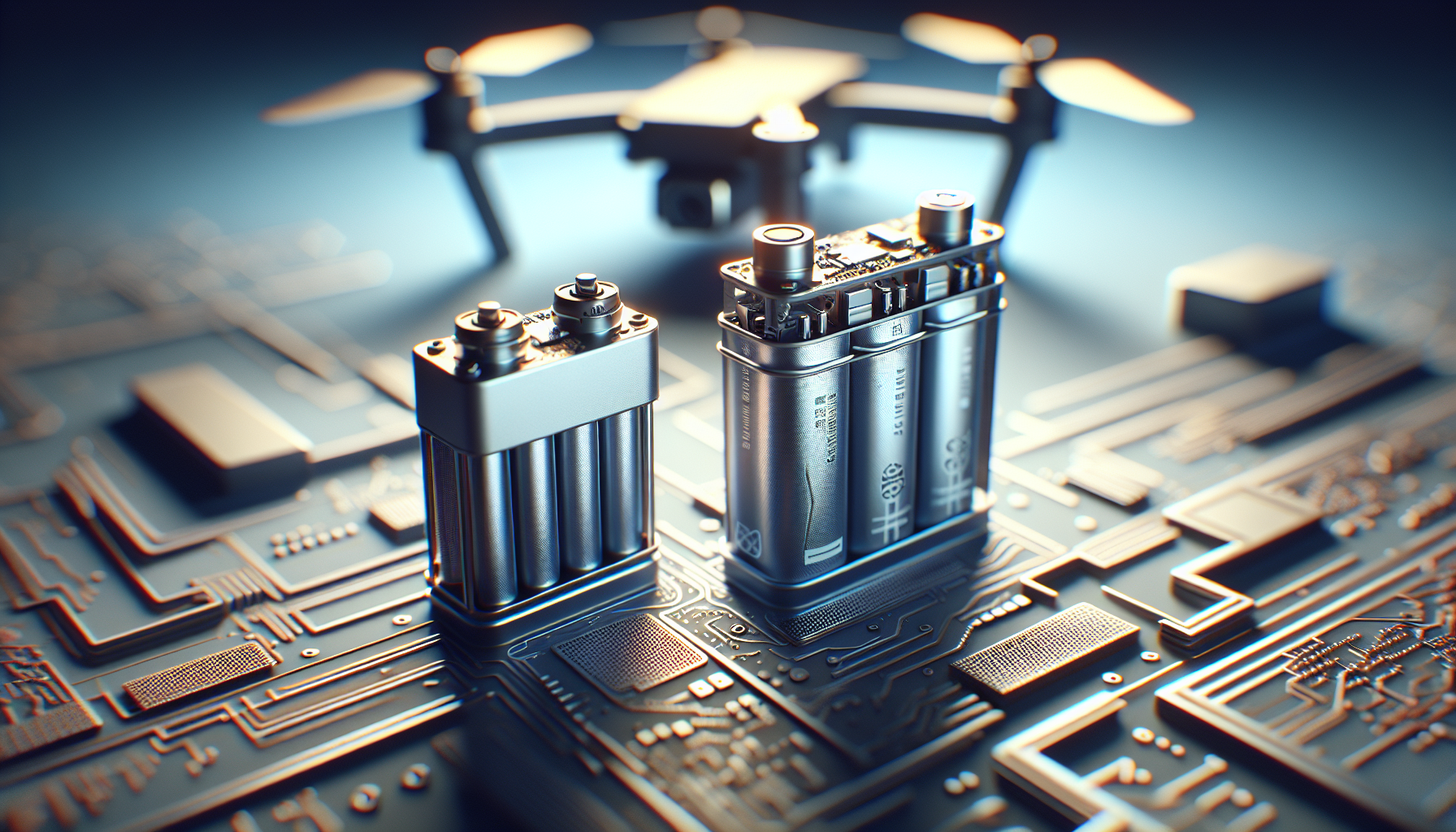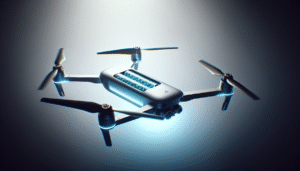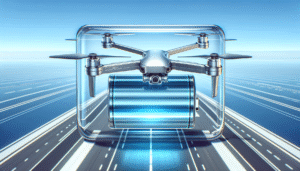Isn’t it curious how something as small as a battery can power such an incredible device as a drone? As we hover into 2025, two major contenders in the realm of drone batteries continue to buzz around: LiPo and Li-ion. But which one is best for your needs? Let’s take a leisurely flight into the intricacies of these powerhouses without getting too technical, because who wants to swim in jargon, right?

Understanding the Basics: LiPo and Li-ion
Before diving into the nitty-gritty differences, it’s important to comprehend what LiPo and Li-ion actually are. These are both types of rechargeable batteries, sharing a common goal but differing in their strengths and weaknesses.
What Are LiPo Batteries?
LiPo stands for Lithium Polymer. There’s something kind of futuristic about the name, isn’t it? These batteries are known for their lightweight structure and high-power capacity, making them a favored choice for drones. Just like how some of us are daredevils on caffeine, LiPo batteries deliver strong, instant energy bursts, giving drones the oomph they need to perform acrobatics. However, they do demand proper care — think of them as high-maintenance pets that reward you with spectacular tricks.
What Are Li-ion Batteries?
Li-ion, short for Lithium-Ion, sounds equally intriguing. These batteries are known for their stability and longevity, much like an old pair of shoes that have seen you through stormy weather. They’re the dependable choice, offering consistent power over a long duration, making them perfect for an afternoon of drone photography. While they might not have the same explosive energy as LiPo, they certainly offer reliability.
Performance Comparison: Speed, Efficiency, and Power
When considering which battery to embrace for your drone escapades in 2025, it’s crucial to evaluate performance. After all, a drone without the right battery is akin to a tiny plane without wings.
Energy Density
Energy density is where many decisions are made. It’s like choosing between a fuel-efficient hybrid and a turbocharged sports car. Li-ion batteries generally have a higher energy density, providing more juice over longer flights. Meanwhile, LiPo batteries, with their slightly lower energy density, allow for fast discharge, meaning your drone can perform maneuvers as sharp as your witty comebacks at family dinners.
Power Output
Speaking of sharp maneuvers, power output is where LiPo batteries shine. When you’re in the sky navigating through your neighbor’s makeshift obstacle course, you want a battery that can handle the instant power draw without breaking a sweat. LiPo batteries can deliver this in spades, giving drones the quick boost they need for agile movement.
Longevity and Recharge Cycles
Li-ion batteries hold an advantage in terms of longevity. Think of them as the long-distance runner who can just keep going. They tend to have a more substantial number of recharge cycles, meaning you can fly your drone out into the horizon for many a sunset shoot before needing a replacement. On the flip side, LiPo batteries, while sturdy, may tire more quickly over repeated charge cycles.

Safety Considerations: A Cautious Approach
While drones seem all fun and games, it’s critical to keep safety at the forefront, especially when batteries are involved. After all, you wouldn’t want your airborne buddy to transform into an unintended firework display.
Potential Risks with LiPo
LiPo batteries, due to their higher discharge capability, are akin to a sporty car — exhilarating but with a need for careful handling. If punctured or damaged, they can pose safety risks, manifesting in ways that can make even seasoned drone enthusiasts need a sit-down tea break. It’s vital to follow guidelines regarding charging and storing these batteries to avoid alarming situations.
Stability of Li-ion
Li-ion batteries, known for their stability, are far less likely to become the surprise guest at your family BBQ. They provide a level of security and peace of mind, making them a suitable option for drone hobbyists who prefer a less hands-on approach to battery management.
| Feature | LiPo | Li-ion |
|---|---|---|
| Energy Density | Moderate | High |
| Power Output | High | Moderate |
| Cycle Life | Moderate | High |
| Safety Concerns | Higher risk if mishandled | Generally safe and stable |
Cost Analysis: Evaluating the Price Tag
It’s a given that we’re all a bit price-conscious, especially when it comes to tech investments. Like a good cup of coffee, the price should reflect the quality and experience.
Initial Costs
At first glance, both LiPo and Li-ion batteries don’t differ drastically in price. However, LiPos may appear slightly more budget-friendly upon purchase — a little like saving on instant coffee instead of indulging in a fresh brew. But before you jump on the LiPo wagon, there’s more to consider.
Long-Term Investment
This is where Li-ion solidifies its presence as a worthy contender. Thanks to their longer lifespan and recharge cycles, Li-ion batteries can be more cost-effective over time. It’s like buying that expensive winter coat that lasts through several seasons rather than a cheaper one that leaves you shivering next year.
Drone Use Cases: Choosing the Right Tool for the Job
Choosing between LiPo and Li-ion isn’t just about side-by-side comparisons. It’s also about what you plan to do with your drone. Much like selecting shoes for a hike, the right choice depends on your intended activity.
Recreational Flying
For those whose drones are weekend warriors, providing brief escapes from the mundane, the LiPo battery is likely your material of choice. Its ability to deliver quick bursts of energy means it’s equipped for those exciting moments, whether you’re racing drones or just performing nifty tricks to impress the local park-goers.
Photography and Videography
Do you spend hours chasing the perfect sunset shot? Or perhaps filming your cat’s epic adventures in the garden from above? If so, you’ll lean toward Li-ion batteries for their reliable longevity and stability, ensuring you capture every moment without fussing over mid-flight battery changes.
Professional Use
For those piloting drones for professional purposes — think surveying, inspections, or filming commercials — the decision may require a mix of both batteries. High power and maneuverability during tricky flights may call for a LiPo, while other tasks demanding long flight times would benefit from a Li-ion. Essentially, consider your drone’s battery like a trusty old Swiss Army knife, equipped with options for every scenario.
The Future of Drone Batteries: Innovations and Trends
Now, as we gaze beyond 2025, exciting developments are sparking in the world of drone batteries. While we already see LiPo and Li-ion improving annually, what lies ahead tantalizes tech lovers worldwide.
Advancements in Battery Technology
Excitingly, battery technology is continuously evolving. New compositions and safer, more efficient designs are on the horizon, promising to make our current choices look akin to flip phones in a smartphone age. Quantum batteries, enhanced anodes, and solid-state technologies are peeking over the horizon, ready to leap into our lives.
Environmental Considerations
As drones become more prevalent, sustainability becomes crucial. Both LiPo and Li-ion manufacturing processes are looking toward greener footprints, including more recyclable materials and energy-efficient production methods. Isn’t it nice when tech aligns with good conscience?
Regulatory Developments
Increased drone usage comes with regulatory updates. Understanding and adapting to these changes requires as much attention as choosing the right battery. Batteries themselves may soon face standardizations regarding environmental or safety regulations, affecting our choices.
Conclusion: Making Your Informed Decision
Reflecting on our exploration of batteries, choices remain personal and varied. Much like choosing a pet — be it a playful puppy or an independent cat — your drone battery needs to suit your lifestyle, needs, and preferences.
When selecting between LiPo and Li-ion, weigh performance specifics, safety considerations, costs, and your use-case scenarios. Remember, there’s no universally perfect choice, as each offers unique advantages based on intended usage and personal priorities. Whatever choice you make, may your drone soar gracefully, powered by a battery that consistently meets your expectations.


